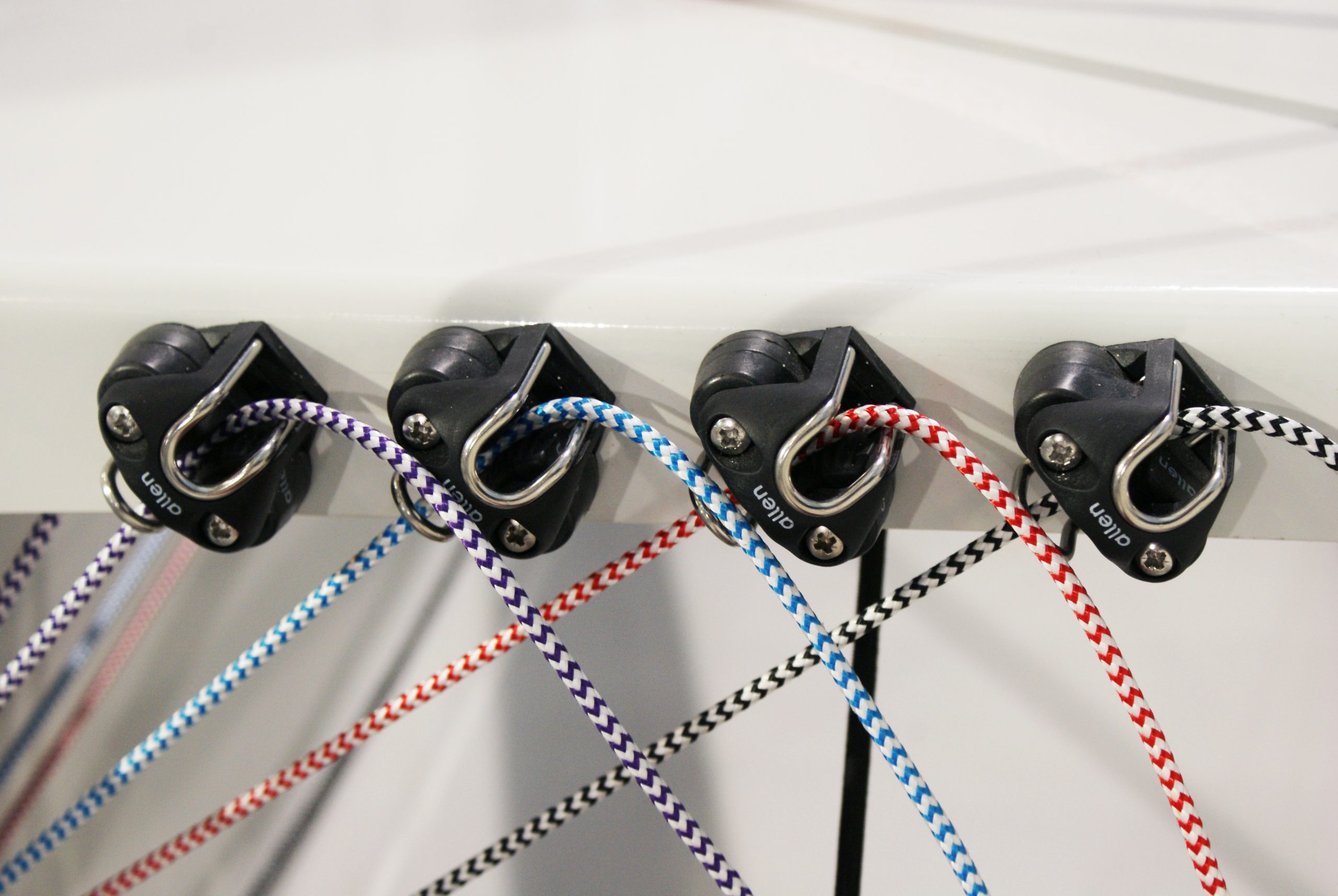Comment entretenir un taquet coinceur Allen
Comment entretenir un coinceur Allen
How to service an Allen Cam Cleat

Cam cleats are a vital part of most control systems on both dinghies and yachts. Without them, you would have to hold onto the rope for hours or make the rope off around a horn cleat, not ideal if you want to quickly adjust something!
Cam cleats, like most parts on a boat, need regular maintenance. The most obvious sign as to when the cam cleat needs some TLC is when the cam jaws start to stick in the open position which in turn allows the rope to slowly slip through – defeating the object of having a cleat!
Servicing your Allen cam cleat is quick and easy, you just need a couple of tools, some replacement parts and 5 minutes of your time.
TOP TIP – Always wash the cam cleats on your boat with fresh water after sailing. This helps remove any salt, grit or sand from the internal mechanism. Ensuring your cam cleat will operate smoother for longer!
Jump to
Types of Cam Cleat
How to service a Cam Cleat
Working Loads
Shop Cam Cleats
Types of Cam Cleat
We have two main styles of cam cleats available; Aluminium Ball Bearing and Allenite Plain Bearing. Both are suitable for rope up to 10mm in diameter. The jaw profiles have been optimised for rope entry and exit which results in smooth cleating and un-cleating without damaging the rope.
Aluminium Ball Bearing Cam Cleats feature die-cast aluminium jaws and base, which results in a higher working load and a more durable finish when compared to the Allenite version. The aluminium cam cleat also features two rows of ball bearings, giving the jaws a super smooth rotation when opening and closing, resulting in an easier to use cam cleat.
These design features make the aluminium cam cleat perfect for applications which may have a fast running control line, such as a spinnaker halyard, mainsheet or jib sheet.
Allenite Plain Bearing Cam Cleats feature the same jaw profile as the aluminium version but the jaws and base are moulded from a proprietary material developed specifically for low weight and good heat dissipation to increase wear resistance when compared to standard acetals. The removal of ball bearings offers a further weight reduction. The Allenite cam cleat offers a good weight saving over the aluminium version. Allenite cam cleats are designed as a cheaper alternative for low load applications.


How to service a cam cleat
Firstly, you will need a servicing kit. These can be purchased via our website or from your local Allen stockist.
You will also need:
Flathead screwdriver.
Plate or box to place the disassembled parts into.
Bowl of water.
Tweezers.
Watch the following video for a step by step guide on how to service an A..76 cam cleat. This process can also be followed for the A..77.
Working Loads
Usually, you would expect to see a Breaking Load and a Maximum Working Load for a Cam Cleat, However, Allen Cam Cleats do not have a breaking load, due to the nature of their design.
The breaking load is as you would expect, the load at which the product breaks. But, due to the profile of the cam cleat jaw, it isn’t possible to reach a “breaking load”. When the load of the rope exceeds the stated working load of the cam cleat, the rope will slip upwards until it pops out of the cleat. The cam cleat will remain undamaged, and once the load on the line has been reduced it can be cleated again.
Therefore, our cam cleats only have a maximum working load – the load at which the rope pops out of the cleat.
- A..76 – 150Kg
- A..77 – 100Kg
- A.676 – 130Kg
- A.677 – 80Kg
